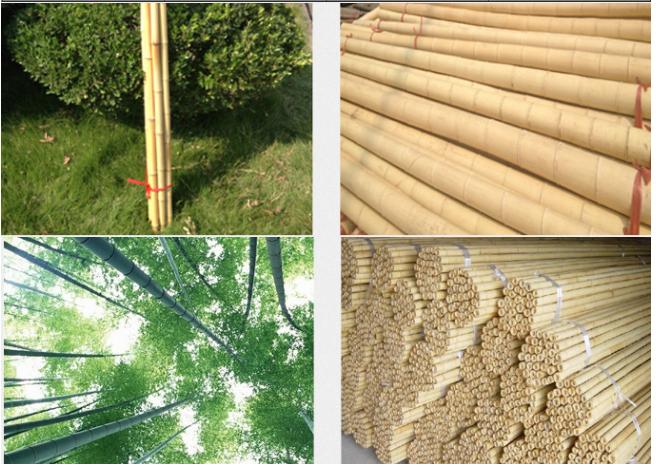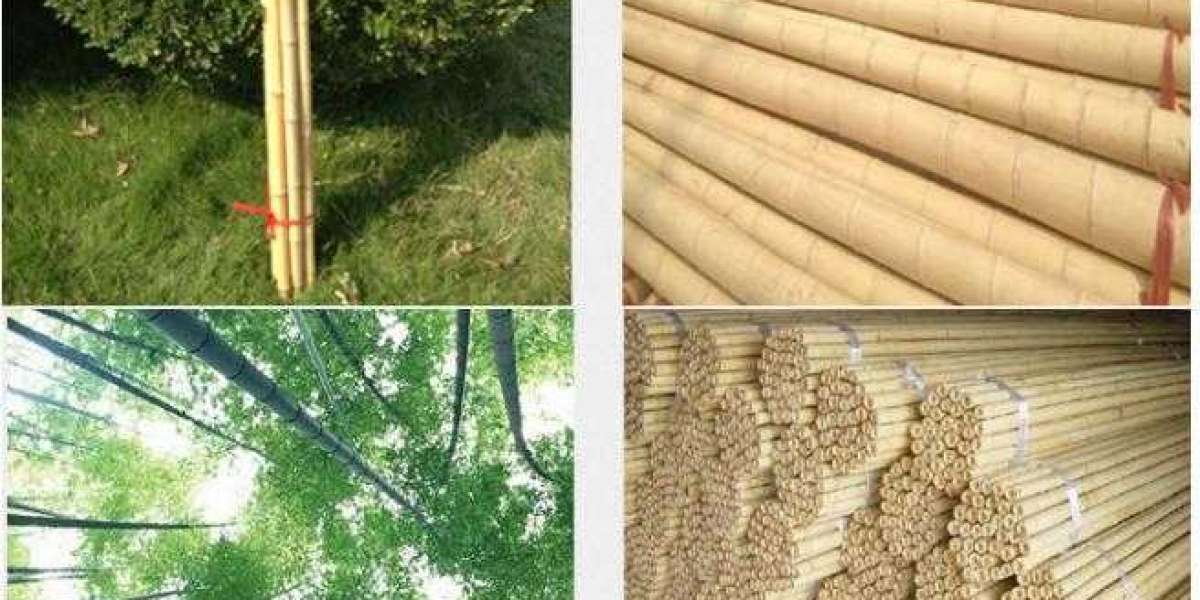Supporting your plants as they grow is essential for ensuring their health and productivity. Whether you're growing tomatoes, beans, or climbing roses, providing them with the right structural support helps prevent damage, promotes better growth, and can even improve yield. Among the various support options available, thick bamboo stakes are a popular choice for gardeners. They are durable, eco-friendly, and blend seamlessly into the natural landscape of any garden.
In this article, we will explore everything you need to know about thick bamboo stakes, including how to choose the right ones, how to use them effectively, and how to maintain them for long-lasting support in your garden.

Why Choose Thick Bamboo Stakes?
Durability and Strength
One of the primary reasons gardeners opt for thick bamboo stakes is their strength. Unlike thinner stakes, thick bamboo provides better support for heavier or more robust plants. This is especially important for plants like tomatoes, cucumbers, or tall flowering plants, which can become top-heavy as they mature. Bamboo is naturally strong and resilient, offering excellent support without the risk of snapping or bending under weight.
Eco-Friendliness
Bamboo is one of the most sustainable materials available. It grows rapidly without the need for pesticides or fertilizers and regenerates after harvesting, making it an eco-friendly choice for environmentally conscious gardeners. In contrast to plastic or metal stakes, which can be harmful to the environment or require significant energy to produce, bamboo has a minimal environmental footprint.
Weather Resistance
Thick bamboo stakes are well-suited to withstand the elements. Unlike wooden stakes, which can rot or warp when exposed to moisture, bamboo is naturally resistant to rain and sun. This durability makes bamboo an excellent long-term investment for your garden, as it can be used season after season with proper care.
How to Choose the Right Thick Bamboo Stakes
Consider the Thickness
Not all bamboo stakes are created equal. When choosing thick bamboo stakes, it's important to consider the thickness in relation to the type of plants you're supporting. For larger plants with heavy foliage, such as tomatoes or sunflowers, thicker stakes (approximately 1-2 inches in diameter) provide the necessary strength to keep them upright. Thinner stakes may suffice for smaller, lighter plants like peas or herbs.
Height Matters
The height of your bamboo stake should correspond to the expected growth of your plants. Ideally, the stake should be at least 6-12 inches taller than the plant at full maturity. This ensures the plant has adequate support as it grows and prevents the stake from becoming overwhelmed by the plant’s weight. For example, if you are staking tomato plants that will grow to 5 feet, a 6-foot bamboo stake is recommended.
Quality and Source
Not all bamboo stakes available in stores are of the same quality. Look for stakes that are straight, uniform in thickness, and free from cracks or splinters. High-quality bamboo stakes should feel solid and sturdy. It's also a good idea to source bamboo from reliable suppliers, especially those who promote sustainable harvesting practices.
How to Use Thick Bamboo Stakes for Plant Support
Staking Techniques
Using thick bamboo stakes properly requires understanding how to securely anchor them in the soil and attach your plants. Start by driving the stake into the ground near the base of the plant, but be careful not to damage the roots. The stake should be deep enough to remain stable, typically 8-12 inches into the soil, depending on its length and the soil's texture.
For plants that need vertical support, like beans or peas, tie the plant gently to the stake with soft garden ties or twine. Be sure to leave enough slack for the plant to grow and avoid tying too tightly, as this could damage the stems. For bushier plants, such as tomatoes, you may need to use multiple stakes to create a cage-like structure that provides better support from multiple angles.
Supporting Different Plant Types
- Tomatoes: For indeterminate varieties, insert the bamboo stake when planting and tie the main stem to the stake every 10-12 inches as the plant grows. Use soft ties to avoid damaging the plant.
- Climbing plants (beans, peas, etc.): Position the stakes in a teepee formation and weave the vines around the bamboo as they grow, securing them gently if needed.
- Tall flowering plants (sunflowers, dahlias): Place the stake next to the main stem and tie the plant loosely to the stake to keep it upright in windy conditions.
Common Mistakes to Avoid
- Tying plants too tightly: This can restrict growth and damage the plant. Always leave room for the plant to expand.
- Using stakes that are too short: If the stake isn't tall enough to support the plant at full height, it won’t provide proper support as the plant grows.
- Improper placement: Driving the stake too close to the plant's roots can cause damage, so leave a small gap between the base of the plant and the stake.
How to Maintain Thick Bamboo Stakes for Longevity
Cleaning and Storage
To ensure your thick bamboo stakes last for several seasons, proper maintenance is essential. At the end of the growing season, remove the stakes from the soil and clean them off with a soft brush and water to remove any dirt, sap, or debris. Allow them to dry completely before storing them in a dry, covered area. This prevents mold growth and prolongs their lifespan.
Inspecting for Damage
Before reusing your bamboo stakes for the next growing season, inspect them for any signs of wear, such as cracks or splintering. Damaged stakes may not provide the necessary support and could even harm your plants. Replace any stakes that are no longer in good condition.
Prolonging the Lifespan
To extend the life of your thick bamboo stakes, consider treating them with a natural preservative or sealing them with linseed oil. This can help prevent rot and protect them from moisture, especially if they are used in damp climates. Proper storage, as mentioned above, is also key to preserving their condition.
Conclusion
Thick bamboo stakes are an excellent, sustainable choice for supporting your garden plants. They provide the strength and durability needed to help your plants grow strong and healthy while offering an eco-friendly alternative to other staking materials. By choosing the right stakes, using them correctly, and maintaining them properly, you can ensure that they last for many growing seasons.
Investing in high-quality thick bamboo stakes not only supports your plants but also contributes to a greener, more sustainable gardening practice. So, why not give bamboo stakes a try in your garden and enjoy the benefits of natural, long-lasting plant support?



